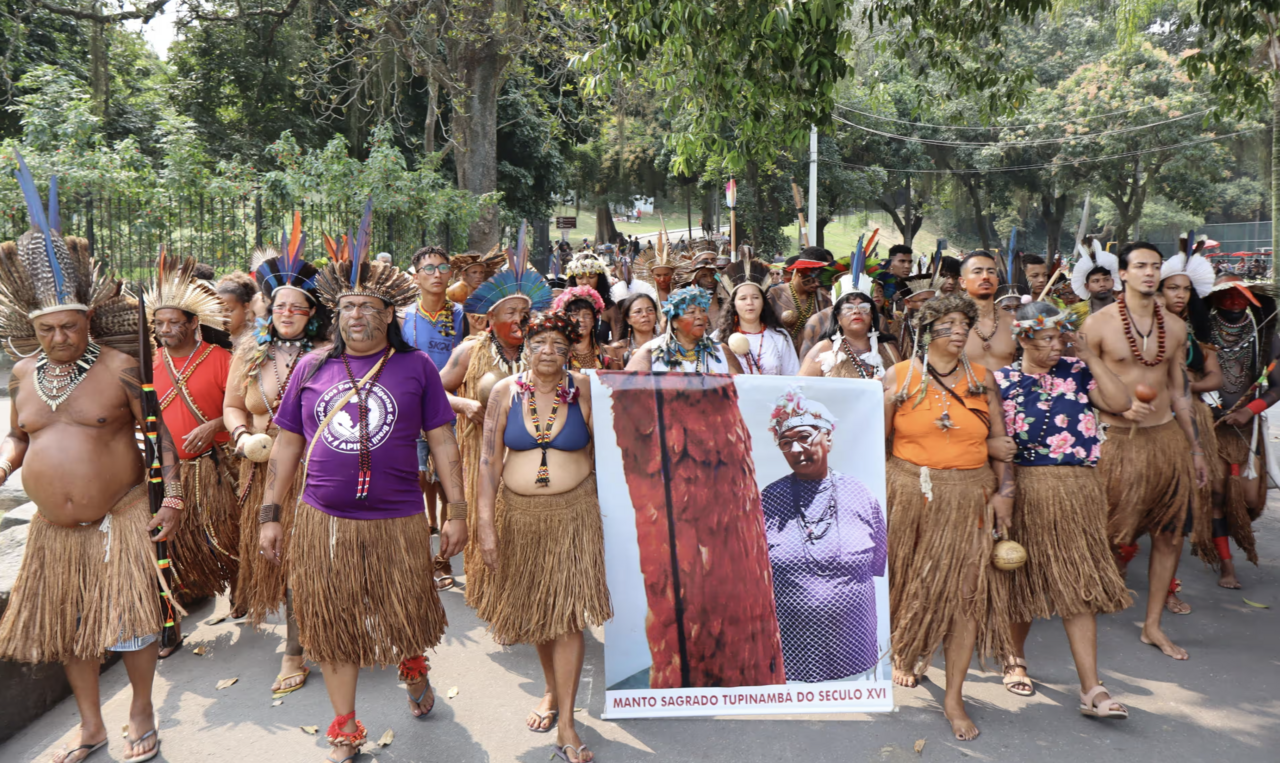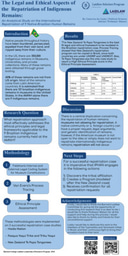Legal and Ethical research on the international repatriation process of Indigenous remains held in American Museums.

Background
Throughout history, Native People across the globe have been stolen, killed, and displaced. With the continuous harassment and displacement of natives tribes to other regions, many artifacts were left behind and are found today in museums. However, artifacts are not the only things in exhibition in western museums. Over 250 thousand native remains are found in Museums in the United States. More specifically, the American Museum of Natural History holds approximately 15 thousand native bodies in their collection. Out of that number 9 remains are identified as indigenous Brazilian remains that have no records of acquisition.
Outline
The purpose of the research is to gather relevant and comprehensive data about international repatriation of native remains with a focus on the repatriation of the 9 native Brazilian bodies from the American Museum of Natural History to Brazil. The research is composed of a 2 part methodology that will assess the ethical and legal impacts of international repatriation. An ethical analysis is done by interviewing 12 curators from the AMNH. In regards to legal analysis, a legal policy analysis will be done between the Brazilian bodies case study and previous repatriation cases such as Australian human remains repatriation case study.
Question
With that, it is imperative to ask: How does the international repatriation of native remains function? How can the 9 Brazilian native remains in the American Natural History Museum be repatriated?
Impact
The research proposal was presented to members of the National Historic and Artistic Heritage Institute (IPHAN) in Brazil. The institute was not aware of the existence of these bodies nor aware of the AMNH’s long-term ownership over the Brazilian remains. Since there is no binding law that American museums should repatriate international remains, this research strives to find an easier path for non-American natives to request for their ancestors' remains to be repatriated.
Resources
Gaudenzi, Bianca, and Astrid Swenson. “Looted art and restitution in the Twentieth Century – towards a global perspective.” Journal of Contemporary History, vol. 52, no. 3, 20 June 2017, pp. 491–518, https://doi.org/10.1177/0022009417692409.
Merryman, John Henry. Imperialism, Art and Restitution. Cambridge University Press, 2006.
Rogero , Tiago. “‘A Beacon of Hope’: Indigenous People Reunited with Sacred Cloak in Brazil.” The Guardian, Guardian News and Media, 12 Sept. 2024, www.theguardian.com/world/2024/sep/12/indigenous-cloak-brazil-return.


Please sign in
If you are a registered user on Laidlaw Scholars Network, please sign in